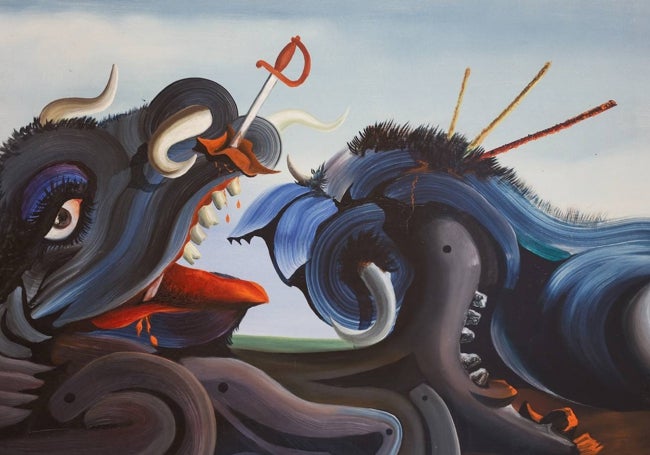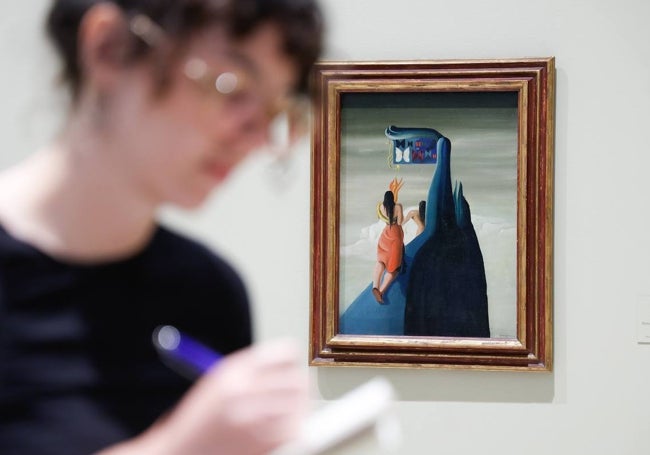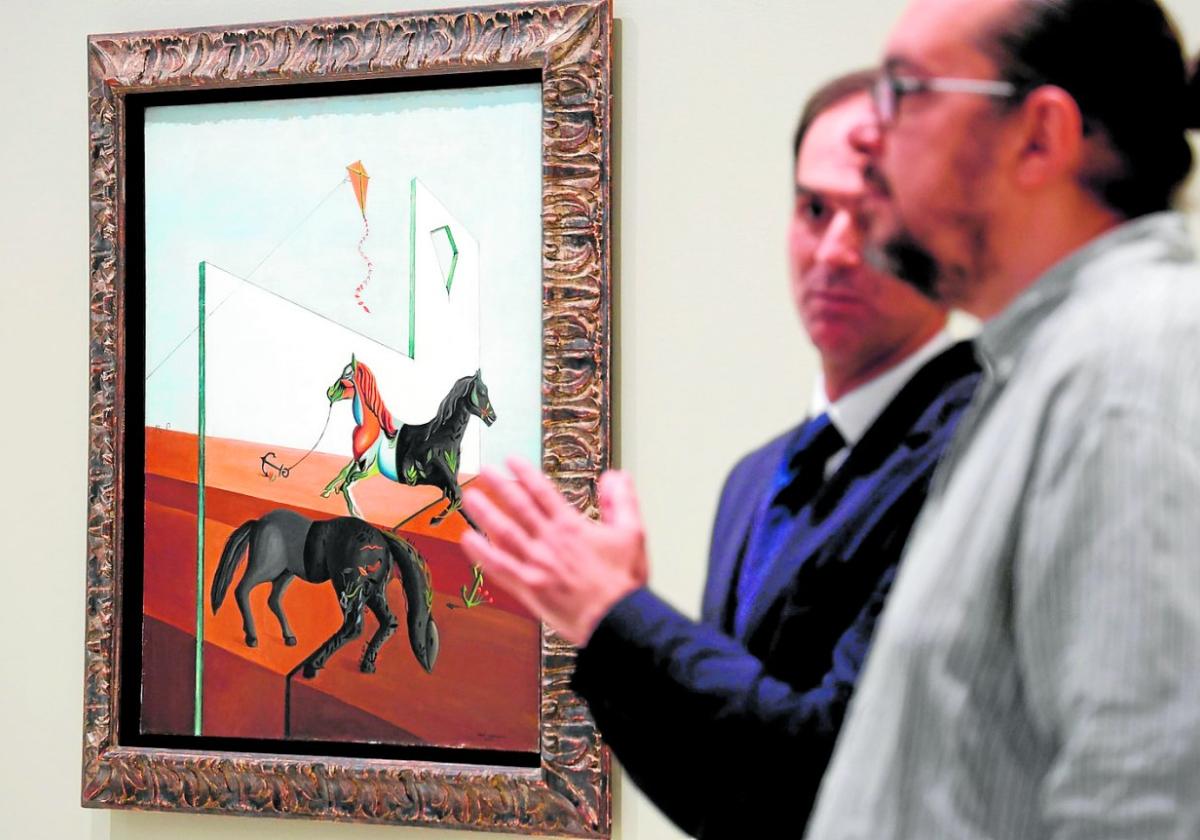Museum welcomes exhibition of surrealist from Canaries who shared Picasso's exile in Paris
The Picasso museum is showing over 100 pieces by Óscar Domínguez, seen as one of the Spanish greats of the 20th century alongside Dalí and Miró
Paco Griñán
Malaga.
Friday, 27 June 2025, 10:55
Among a variety of self-portraits, one features a surrealist minotaur anatomically dissected in cubist style. Another includes a bull with a sword through its snout, also classified as a self-portrait. This beast of the bullring is linked to Picasso but isn't his work. Instead they belong to the 'D' painted on the sword's hilt: 'D' for Domínguez, Óscar Domínguez (Tenerife, 1906 - Paris, 1957).
Fellow artists and exiles in Paris, neither returned to Spain after the civil war. But the Museo Picasso Málaga (MPM) has repatriated them for this retrospective, bringing Domínguez's art from the Canaries to the halls of his Malaga-born mentor. It's the first Spanish exhibition dedicated to Domínguez in nearly 30 years since his Reina Sofía collection in 1996.
Le Dimanche o Rut Marin (1935) was chosen as the exhibition's cover. The canvas depicts horses dissected by a mirror which paradoxically doesn't separate the real from the surreal - both sides are extraordinary and fantastical. Domínguez's pure surrealism is considered the third most notable Spanish contribution to the international avant-garde movement, alongside Miró and Dalí.
The Spanish Civil War took Domínguez by surprise. He somehow escaped to Paris and never returned to his homeland
Domínguez took inspiration from Dalí's style, combining surrealist space with his native Canary Islands landscape. "This avant-garde movement was closely linked to big cities like Paris and Prague. Domínguez brought in a distinguished element - although he borrowed features of Dalí, his work travels back to his childhood, to the cliffs and nature of the islands," explained Isidro Hernández, chief curator and exhibition commissioner.

The exhibition demonstrates Domínguez's signature "volcanic territory". Native women appear in works like Mariposas Perdidas en la Montaña (1934), and the iconic thousand-year-old dragon tree features in his 1933 piece El Drago, where it acted as the painter's tree of life before becoming a tourist attraction.
His childhood memories transcended personal recollection, becoming universal through surrealism - a key feature of the retrospective, according to MPM director Miguel López-Ramiro.
The display was organised jointly by MPM and Tenerife Espacio de las Artes (TEA), featuring works from Spain, France, Germany, and Switzerland. "Óscar said that 80 per cent of what he learnt was from Picasso, who he considered a genius and close friend," said Sergio Rubiera, TEA's artistic director.
Bernard Ruiz-Picasso, the Malaga-born painter's grandson, highlighted "the relationships that Picasso had with other artists" and applauded Domínguez's return to the peninsula, closing with: "Welcome, Mr Domínguez."
More than 100 works demonstrate Domínguez as a symbolist and visionary. The collection includes references to Buñuel's surrealism with El Enigma de la Inspiración and La Bola Roja, but Picasso's influence truly permeates the selection.
Picasso had a fatherly role in Domínguez's life. "There were 25 years between them, but in Paris and especially in exile they met daily," said commissioner Hernández.
Decalcomania and Cosmic Paintings
The exhibit shows how avant-garde transitioned into surrealism using decalcomania, translating to cosmic paintings in the 1930s, while in the 1940s Domínguez adopted Picasso's brushstrokes and style.
Their relationship went beyond art - Óscar became the first artist to support the Fondo Picasso fund, helping children during the Spanish Civil War. "He had been branded apolitical, but this exhibition shows that wasn't true," said the commissioner, highlighting antiwar pieces like La Apisonadora y la Rosa, clearly depicting the Spanish struggle.

The war caught Domínguez in Tenerife and he escaped to Paris. Like Picasso, he never returned to Spain. MoMA and European museums continually displayed his work, and his final piece features in this exhibition.
Pay close attention to the 1933 self-portrait - a piece without his signature symbolic bulls, just the recognisable face of the painter on a surrealist body with a Daliesque arm showing slit wrists. Twenty-four years later, friends in Paris went to his studio when he didn't show for dinner.
They found him in the bath. It was as if he had issued a warning in that oil painting - he had bled out after slitting his wrists.
The exhibition runs at MPM until 13 October.
